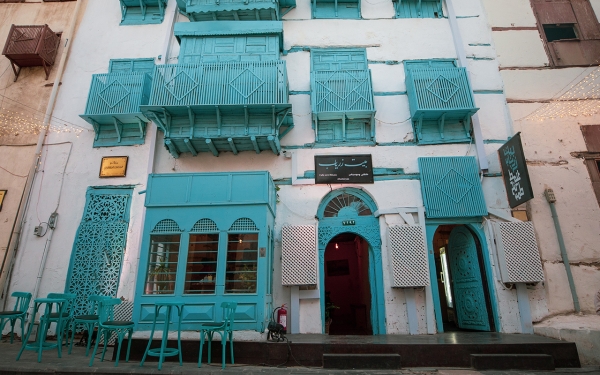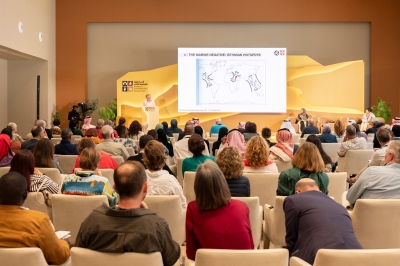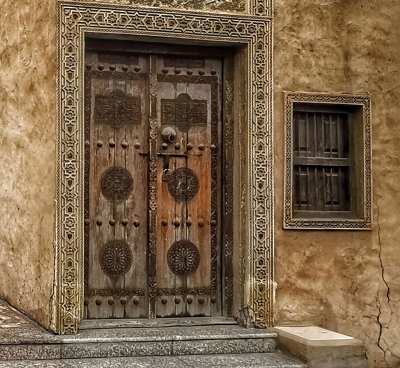

"Mashrabiyas" are the prominent features of "Al-Rawashin," which were well-known in ancient Hejazi houses. Mashrabiyas were used to cool the area. They were named after the small drinking water jars or terracotta vessels that were placed in that part, either to cool the water or to cool the area through evaporation, as the dry air and toxins enter through the openings of Al-Rawashin facade, passing through the water placed in front of it, causing the evaporation process. This transformed the hot winds into more gentle breezes inside the house. This architectural addition originated from Islamic architecture.
The evolution stages of Mashrabiyas
The external appearance of ancient Hejazi houses can be divided into houses with a single façade, houses with two façades, and houses with multiple facades adorned with "Rawashin." These Rawashin encompassed Mashrabiyas that resemble towers supported by velvet cables made of small, precisely crafted wooden joints. This design ensures the highest efficiency in protecting against sunlight and heat while allowing air passage.
The wooden facades of these Mashrabiyas were decorated with geometric shapes, all handcrafted in the past. This distinctive architectural style evolved over time, and the Mashrabiyas expanded to become separate aesthetic designs from their original functional purposes mentioned earlier. The first development in the evolution of Mashrabiyas was the construction of balconies, which can be either semi-open in design or protruded as prominent areas of the house. They are covered with wood or colored glass, and iron elements are also incorporated into their design. They are built to provide privacy for the house's occupants while adding an aesthetic appeal.
Saudi Arabia's efforts to preserve architectural heritage
The Saudi government is committed to preserving its urban heritage, with efforts coordinated across various sectors. The focus extends beyond safeguarding historical sites and architectural heritage, to include halting unplanned demolition and launching initiatives that involve emirates, provinces, municipalities, and local authorities. Furthermore, certain aspects of urban heritage, such as "Mashrabiyas" and "Rawashin," have transformed into Saudi crafts that have been practiced for over seventy years.
One aspect of the state's interest in cultural and historical assets is the directive of the Crown Prince, Chairman of the Council of Ministers, His Royal Highness Prince Mohammed Bin Salman Bin Abdulaziz, in June 2019, to provide financial support of SAR50 million to preserve and restore endangered heritage buildings and landmarks. This initiative has benefited over fifty-six buildings in the city of Jeddah.
The expansion of the architectural heritage's influence
Mashrabiyas are an important part of the cultural image of cities in the Hejaz region, such as Jeddah, al-Taif, Al-Madinah al-Munawwarah, and others. The arts, festivals, and local artworks have been infused with elements of Islamic architecture, which have found their place in the latest exhibitions and architectural designs to this day. One of these works can be seen at King Abdulaziz International Airport, where the Mashrabiyas are used as an artwork embodying the Saudi identity, covering a portion of the airport's walls.
Related quizzes


